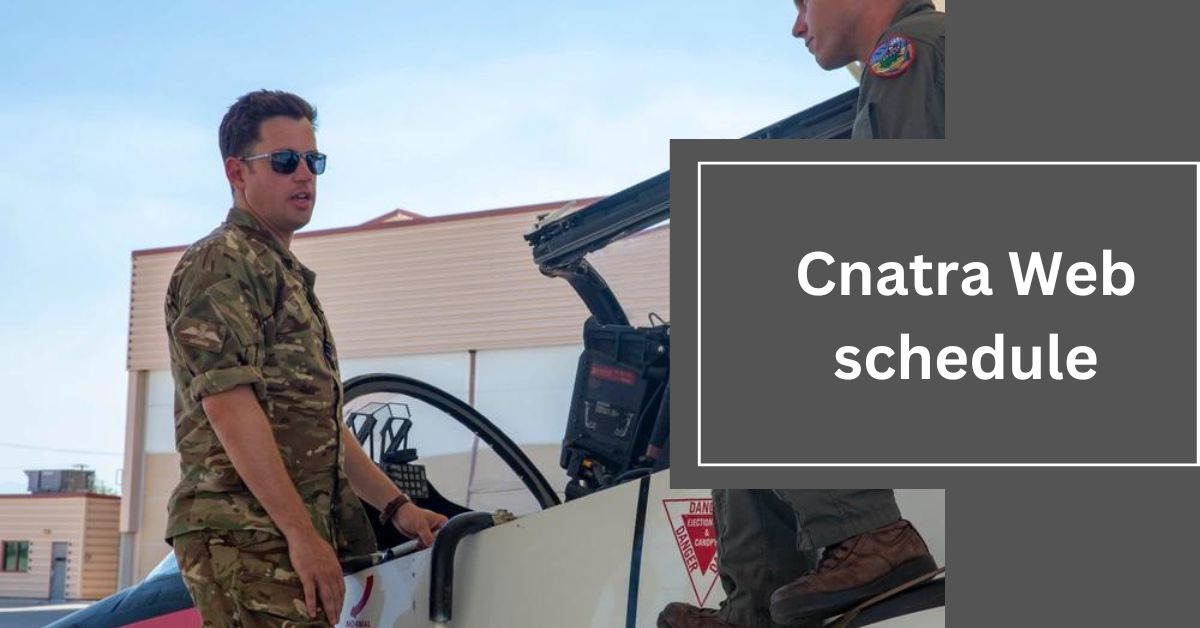Cnatra Web schedule – Discover More With A Single Click!
The CNATRA web schedule is a crucial tool for managing naval aviator training, enhancing resource management, streamlining scheduling, improving communication, and boosting training effectiveness.
The CNATRA web schedule is a centralized system that efficiently manages aircraft, instructor, and student scheduling for naval aviator training, optimizing resource
From preventing scheduling conflicts to enhancing training effectiveness, the CNATRA web schedule is the backbone of efficient and effective naval aviation training.
Efficient Resource Management – Uncover The Facts Effortlessly!
The CNATRA web schedule serves as a centralized platform for managing a variety of resources critical to naval aviation training.

This includes scheduling aircraft, instructors, and students, ensuring that all resources are utilized efficiently. This allows schedulers to make informed decisions about resource allocation, ensuring that resources are utilized to their fullest potential.
By centralizing resource management, the CNATRA web schedule helps avoid scheduling conflicts and ensures that resources are allocated based on availability and priority.
Optimized Resource Allocation:
The CNATRA web schedule optimizes resource allocation by providing visibility into the availability of aircraft, instructors, and students.
This allows schedulers to make informed decisions about resource allocation, ensuring that resources are utilized to their fullest potential.
For example, if a particular aircraft is not available for a specific training session, the scheduler can quickly identify alternative options to avoid delays or disruptions in the training schedule.
Prevention of Scheduling Conflicts:
Scheduling conflicts can disrupt training schedules and lead to inefficiencies. The CNATRA web schedule helps prevent scheduling conflicts by providing real-time visibility into the availability of resources. If a scheduling conflict arises, the system can alert schedulers and provide options for resolving the conflict, such as reassigning resources or rescheduling training sessions.
Improved Training Efficiency:
By efficiently managing resources and preventing scheduling conflicts, the CNATRA web schedule improves training efficiency. Instructors can focus on delivering high-quality training without being hindered by resource availability issues. This ultimately leads to a more efficient training process, enabling naval aviators to complete their training requirements in a timely manner.
Streamlined Scheduling Process – Click For A Detailed Overview!
The CNATRA web schedule simplifies the scheduling process for instructors, students, and administrators. Users can easily view their schedules, make scheduling requests, and receive real-time updates on any changes.

This helps prevent confusion and ensures that training activities are conducted according to plan. Instructors can quickly communicate any changes or updates to the schedule, ensuring that training programs are conducted effectively.
This streamlined process reduces administrative burden and allows users to focus more on their training objectives. This ensures that everyone involved in the training process is informed and aware of any changes or updates.
Improved Communication and Coordination:
The CNATRA web schedule serves as a clear communication platform for instructors, students, and administrators involved in naval aviation training.
Instructors can use the platform to communicate important information such as schedule changes, training requirements, and updates to training programs.
This ensures that everyone involved in the training process is informed and aware of any changes or updates.
Improved Coordination:
Effective communication leads to improved coordination among instructors, students, and administrators.
By using the CNATRA web schedule to communicate schedule changes and training requirements, instructors can ensure that all parties involved are on the same page.
This helps prevent misunderstandings and ensures that training activities are conducted smoothly and efficiently.
Must Read: Does Manna Exist Today? – Engage with the debate!
Timely Updates:
The CNATRA web schedule provides timely updates to instructors, students, and administrators, ensuring that everyone has access to the latest information.
This helps prevent confusion and ensures that training activities are conducted according to plan. Instructors can quickly communicate any changes or updates to the schedule, ensuring that training programs are conducted effectively.
Prevention of Misunderstandings:
Clear communication through the CNATRA web schedule helps prevent misunderstandings among instructors, students, and administrators.
By providing a platform for clear and concise communication, the CNATRA web schedule ensures that everyone is aware of their roles and responsibilities.
This improves overall coordination and helps prevent misunderstandings that can lead to delays or disruptions in training activities.
Enhanced Training Effectiveness – Click To Gain Comprehensive Knowledge.
By providing a comprehensive overview of training activities, the CNATRA web schedule helps enhance training effectiveness.

Instructors can track student progress, identify areas for improvement, and tailor training programs to meet individual needs.
This personalized approach to training leads to better outcomes and prepares naval aviators for the challenges they will face in their careers.
By enhancing training effectiveness through personalized instruction and tailored training programs, the CNATRA web schedule helps prepare naval aviators for the challenges they will face in their careers.
By providing a comprehensive overview of training activities, tracking student progress, identifying areas for improvement, and tailoring training programs, the CNATRA web schedule ensures that naval aviators are well-prepared to meet the demands of their profession.
Also Read: Law Enforcement Slangily – Have Friendly Chats With Me!
FAQs:
What is the CNATRA web schedule?
The CNATRA web schedule is a scheduling system used by the Chief of Naval Air Training (CNATRA) to manage flight training activities for naval aviators. It provides a centralized platform for scheduling aircraft, instructors, and students, ensuring efficient resource allocation and effective training management.
How does the CNATRA web schedule improve resource management?
The CNATRA web schedule improves resource management by providing real-time visibility into the availability of aircraft, instructors, and students. This helps avoid scheduling conflicts and optimizes resource allocation, leading to more efficient training operations.
Can users easily access their schedules and make scheduling requests through the CNATRA web schedule?
Yes, the CNATRA web schedule simplifies the scheduling process for users by allowing them to easily view their schedules, make scheduling requests, and receive real-time updates on any changes. This streamlined process reduces administrative burden and improves overall efficiency.
How does the CNATRA web schedule facilitate communication and coordination?
The CNATRA web schedule serves as a clear communication platform for instructors, students, and administrators involved in naval aviation training. It allows users to communicate important information such as schedule changes, training requirements, and updates to training programs, ensuring that everyone is informed and aware of any changes or updates.
How does the CNATRA web schedule enhance training effectiveness?
The CNATRA web schedule enhances training effectiveness by providing a comprehensive overview of training activities. Instructors can track student progress, identify areas for improvement, and tailor training programs to meet individual needs. This personalized approach to training leads to better outcomes and prepares naval aviators for the challenges they will face in their careers.
Conclusion:
The CNATRA web schedule is a vital tool in the training of naval aviators, helping to manage resources efficiently, streamline the scheduling process, improve communication and coordination, and enhance training effectiveness.
Read More:







